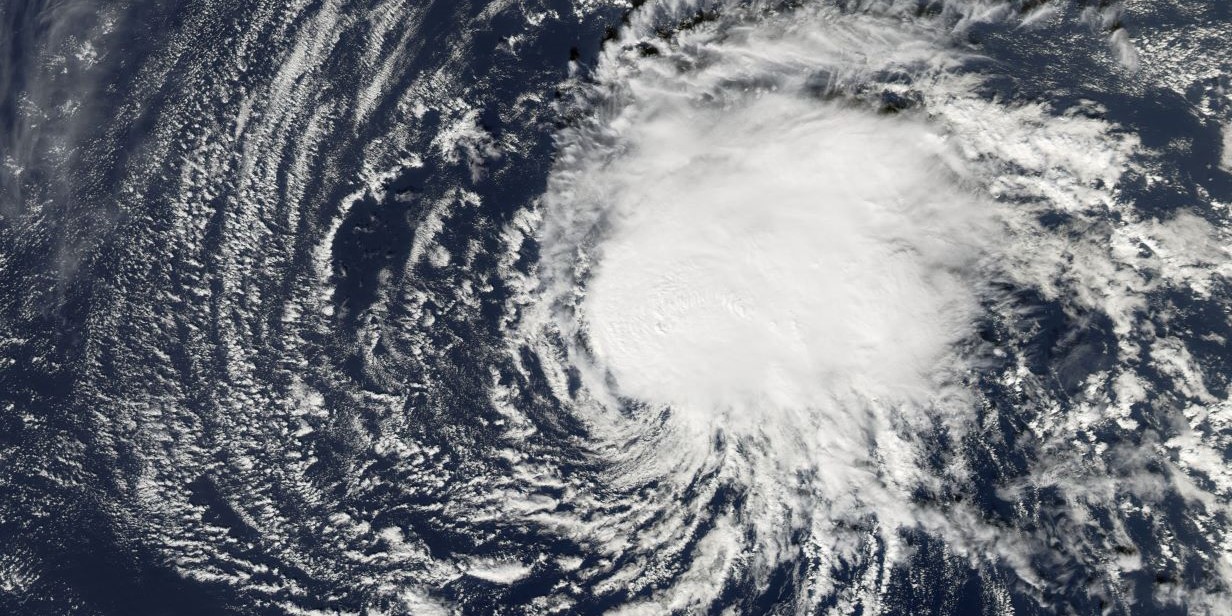2025 Atlantic hurricane season: What businesses should know

The 2025 Atlantic hurricane season officially began on June 1, with the National Oceanic and Atmospheric Administration (NOAA) forecasting a slightly above-normal hurricane season.
Good to know, but virtually anything can happen between June and November because hurricanes are difficult to predict with precision. They can veer toward big cities or drift harmlessly out to sea. They can turn slightly more north or south, with huge effect on storm surge. They can compound the effects of heavy rains from frontal systems that saturate land even before the tropical storm strikes. And budget realities in the U.S. could impact forecasting and disaster recovery.
“If I’m a risk manager, I’d stay on top of forecasts and start emergency protocols earlier and at lower thresholds than in previous years, to account for the regular risks of hurricane season plus the larger uncertainties of the warnings this year,” says Angelika Werner, FM’s research area director of climate risk and resilience.
Whatever happens, FM helps you see the property and business protection risks and opportunities that others don’t, enabling you to sustain operations, revenue, market share, growth opportunities and investor confidence.
The forecasts
Hurricane season runs from June 1 through November 30. On May 22, NOAA’s Climate Prediction Center forecasts 13 to 19 named storms, of which 6 to 10 would become hurricanes and 3 to 5 would become major hurricanes (winds of 111 mph or more). NOAA claims 70% confidence in its forecast.
The 30-year (1991-2020) average is 14 named storms, 7 hurricanes, and 3 major ones.
NOAA’s forecast, which aligns with other prognosticators, is above normal through the hurricane season due to predicted ENSO-neutral conditions, warmer than average ocean temperatures, forecasts of weak wind shear, and the potential for higher activity from the West African Monsoon, a starting point for Atlantic hurricanes. These are just a few of the variables Werner and her colleague, FM senior lead research scientist Shangyao Nong, study to understand the uncertainties for these conditions that may alter NOAA’s seasonal forecast issued in May and ultimately may impact client properties.
The climate angle
Regardless of what some headlines may say, climate change isn’t spawning more tropical storms in the North Atlantic that we know of. But warmer water in the basin is predicted to contribute to a higher proportion of category 3 and above hurricanes compared to overall named storms. The ocean provides the fuel for intensifying cyclones, while warm air holds more moisture to boost potential rainfall. Both factors could increase the loss impact of tropical storms.
Sea surface temperatures are predicted to be above average in the 2025 Atlantic hurricane season. “But the unprecedented warmth that we have had over the last two years appears to be over, luckily, and ocean temperatures are coming closer to previously observed warm seasons,” says Werner.
The hidden cost of loss
Property damage and business disruption from hurricanes can extend beyond immediate repair costs. Damage from hurricanes and flooding correlate with loss in a company’s shareholder value compared to businesses who are resilient enough to sail through, according to our studies in 2019 and 2020.
Investors can perceive sustaining damage as a management mistake, the research found. Fair or not, the perception affects corporate reputation, market share, and growth ambitions. Property damage and disruption also affect the bottom line by causing loss of customers, momentum and investor confidence.
Flood risks and mitigation strategies
Flood, an integral part of the hazards associated with hurricanes and tropical storms, is a significant resilience challenge around the globe, causing billions in losses every year. How risky are your locations? Our natural hazard maps reveal flood exposure for locations around the world powered by our own extensive research and data from leading scientific and government sources. Our engineers use this data and more to propose recommendations for loss-prevention actions.
FM Approved flood-mitigation products, including flood-engineered doors, gates, walls, windows and inflatable dams, can also help.
‘Wet floodproofing’
There are three key principles for mitigating flood risk as Jessica Waters, FM VP, hazards manager for climate and structural resilience, detailed in her recent webinar, “Flooding: Confronting the risks: 1) Stay above flood level, 2) Keep the water out, and 3) Where neither is possible, “wet floodproof” — i.e., let water in, but design the building and its contents to be resilient. See how we helped one flood-exposed client channel water in one door of the factory and out another.
Developing a strong Flood Emergency Response Plan
Assessing risk and resilience
Hurricanes are just one peril that can affect global businesses and their supply chains. If you're assessing risk from a global perspective, explore the FM Resilience Index. You can compare country-by-country natural hazard risks today and in the future via factors like climate risk exposure, climate change exposure, and climate risk quality (as well as 15 other country-specific business-risk factors).
More natural-hazard resources
For extensive resources to prepare for severe weather, explore our Natural Hazard Toolkit and Maps. In white papers, articles, videos and checklists, our experts address the enormous threat these hazards pose to your business.
FM Nathaz Toolkit »